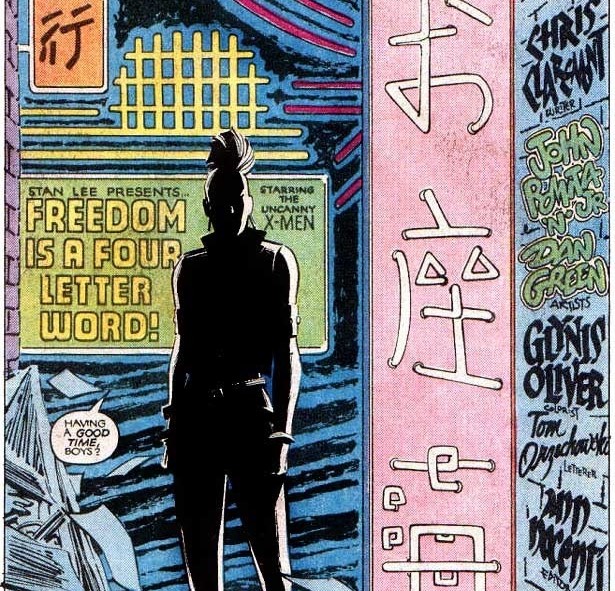In “The Black Body in Ecstasy, “ Women’s Studies professor Jennifer C. Nash advances a revision to the discourse of Black women in visual culture (through the study of pornography) that may offer insight to the complex intersections of sex and race in the X-Men’s Storm. #xmen 1/8 

Nash opens by establishing “black feminism’s approach to representation, which treats visual culture, unless produced by black women, as presumptively problematic.” Her complaint is that critics always fall into this exclusively “protectionist” approach that oversimplifies. 2/8 

Storm’s portrayal of sexual exoticism is well-established in Claremont studies, often with emphasis on the exploitative potential through her participation in long-standing stereotypes that might be seen to dehumanize, objectify, or fetishize Ororo as a character. 3/8 

Nash very much acknowledges the damaging potential that these type of portrayals may have, but she also identifies an additional possibility that is, in her eyes, worth exploring, one which sees “black female protagonists rendering explicit racial mythologies,…” 4/8 

“…at times toying with them, at times finding pleasure in them, and at times problematizing them.” For her, this creates what Judith Butler describes as an “aggressive counter-reading,” something that adds complexity to a discourse and decentralizes essential conclusions. 5/8 

The question then simply becomes: can Storm do this? I can’t answer that question as I think it’s subjective, but I would point to the fact that her sexuality is often transgressive, and that her agency is often central to the entire UXM franchise, so there’s hope. 6/8 

Adapting this theory to comics requires a number of complex localizations due to the fact that Storm is fictional, and thus all attributes of her performance are in the hands of her (usually white male) creators – typically there are zero Black women involved in any way. 7/8 

For Nash, though, the alternative is absence, which might be more politically correct but ultimately unproductive. Storm’s presence as both a sexual object and a sexual subject in the pages of UXM, if nothing else, can foster discussion on Black women’s sexuality. 8/8 

• • •
Missing some Tweet in this thread? You can try to
force a refresh






















